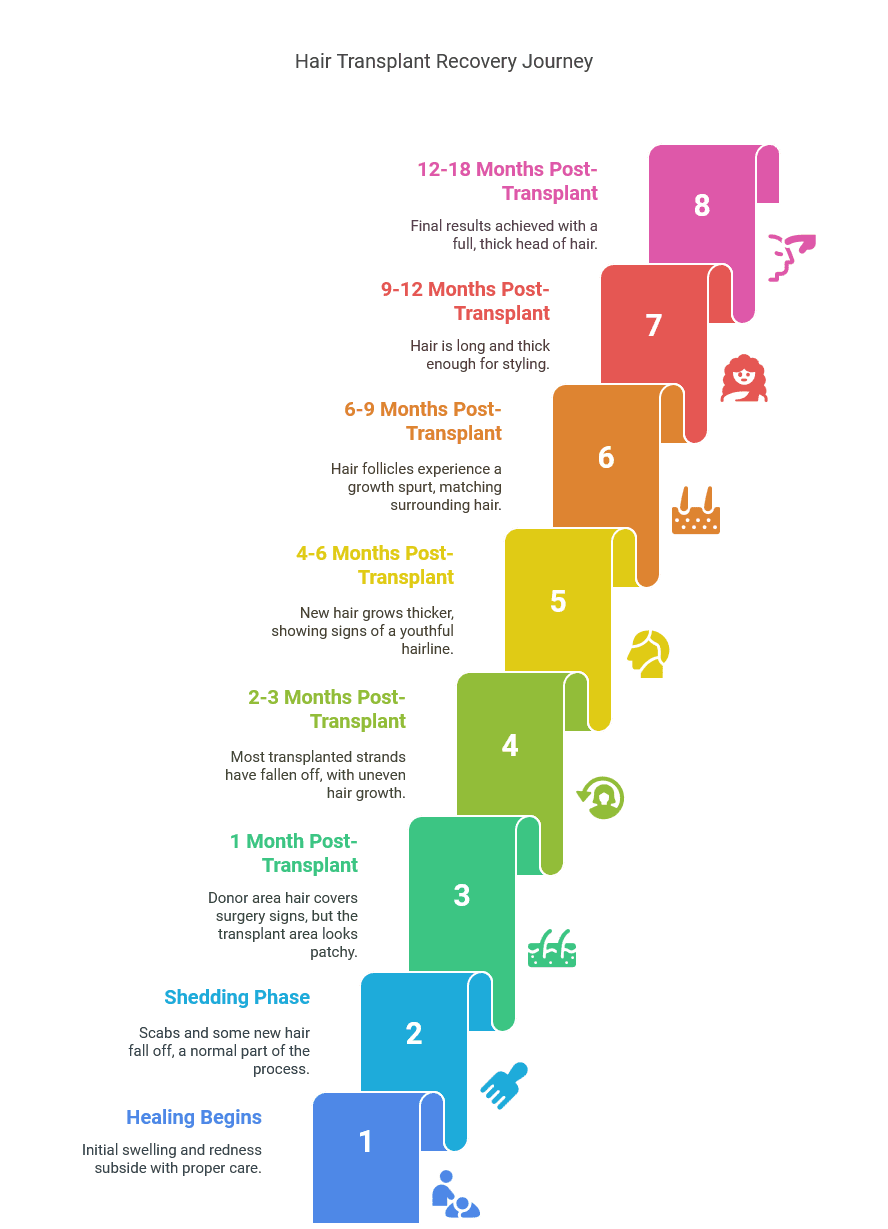If you get a hair transplant in Istanbul at one of the top clinics, you will need some time to fully recover and for your new hair to go through all the phases and start growing out thick and strong. To help you get an idea of what the whole process will look like, we will go over all the basics and explain the recovery timeline over the weeks and months after the procedure.
Planning Your Hair Transplant
People live busy lives and have to think about going to work, family dinners, big events like weddings and other celebrations where they need to look their best. That’s why timing hair transplant procedures correctly is so important – you want to give your scalp enough time to recover and all the new follicles to regenerate and grow out.
In general, you want to schedule an operation several months before a big event or at least 5–7 days before you have to go back to work, but before we go into more detail, let’s look at the lifecycle of your average hair follicle.
Understanding Hair Growth Cycles
There are four main phases that the hair on your head goes through:
- Anagen – this is the growth phase that can go on for two to seven years.
- Catagen – the transition phase of two to three weeks, where the follicles shrink.
- Telogen – the resting phase that lasts three to four months, where the thinner old hair stays in place as the new strands start to grow.
- Exogen – this is the final shedding phase when the old hair falls out, up to 100 per day, but the new one still hasn’t grown out for a couple of months.
After hair transplant surgery, the new hair will have to go through these stages, so some initial shedding is normal and will not affect the final outcome.
Hair Transplant Day: What Happens
The doctor will initially shave your head and give you local anaesthesia before beginning the procedure. Modern methods like the FUE hair transplant involve extracting singular grafts from the donor areas of patients, the back of the head, and then making tiny incisions in the scalp to implant the follicles. That’s why the transplant area will be sore and swollen for a few days.
Good clinics will also provide all the aftercare products patients need after their hair restoration surgeries to ensure a quick recovery.
Recovery & Growth Timeline: Month-by-Month
Here is a closer look at what you can expect in the weeks after a hair transplant procedure.
Week 1: Healing Begins
The recipient area will be swollen, red, and painful until about day four or five, and you will need to follow some basic post operative care, like sleeping with the head elevated and avoiding direct contact, washing, and sun exposure. This will ensure that the healing process continues smoothly.
Week 2: Shedding Phase
Around 10–14 days post op, you will notice that the scabs formed on the recipient area will fall off with gentle washing, but so will some of your new hair. As we already mentioned, it’s just a normal part of the hair growth cycle.
1 Month Post-Transplant
A lot of the new hair will shed, but the hair in the donor area should already be long enough to cover any signs of the surgery. Things will still look a bit patchy.
2–3 Months Post-Transplant
Most of the transplanted strands will have fallen off by this point, and the new hair will grow at different speeds, i.e., reach the next stage at different times, so the whole area will still be quite patchy with some longer and some shorter strands.
4–6 Months Post-Transplant
As more and more of the new hair grows out and becomes thicker and stronger, you will slowly begin to see some of that youthful hairline, but there will still be a mix of thinner and thicker strands at different lengths.
6–9 Months Post-Transplant
This is when the transplanted hair follicles have their big growth spurt and become increasingly thicker, matching the appearance of the surrounding hair.
9–12 Months Post-Transplant
Hair on the top of the head usually grows about one to two centimeters a month, so you should have relatively long and thick strands, and you can get it cut and styled by a professional about 12 months in.
12–18 Months Post-Transplant
This is where you will see the final results – a full head of hair that has fully thickened and darkened to match the appearance of the rest of the head. You can treat it like you normally would and continue living your regular life.

Factors That Affect Your Results
The main things that can determine the speed at which you recover and your ultimate hair transplant results include:
- Age, health, and lifestyle – those in their early 30s, who are in good overall health, exercise regularly, don’t smoke, and drink alcohol sparingly or not at all, will see the best results.
- Donor area quality and scalp looseness – the quantity and quality of hair in the donor area plays a big role, and the looser the scalp in this area, the more grafts can be safely extracted.
- Surgeon’s skill and method used – Sapphire FUE and DHI cause minimal tissue damage and offer more precision, and an experienced doctor will be well-versed in these techniques, thus ensuring better results.
- Proper aftercare and medication – taking good care of the transplant area while it’s healing is crucial, but long-term care is also important, and drugs like Minoxidil and Finasteride can help halt future hair loss.
Everyone is a bit different, so keep these points in mind.
Realistic Expectations & Emotional Journey
Now that you understand the hair transplant recovery timeline, we must give you one last piece of advice – set realistic expectations and prepare yourself for the big changes that will take place. You are in for a bit of an emotional rollercoaster for the first few months after the operation, so prepare yourself mentally for this.

